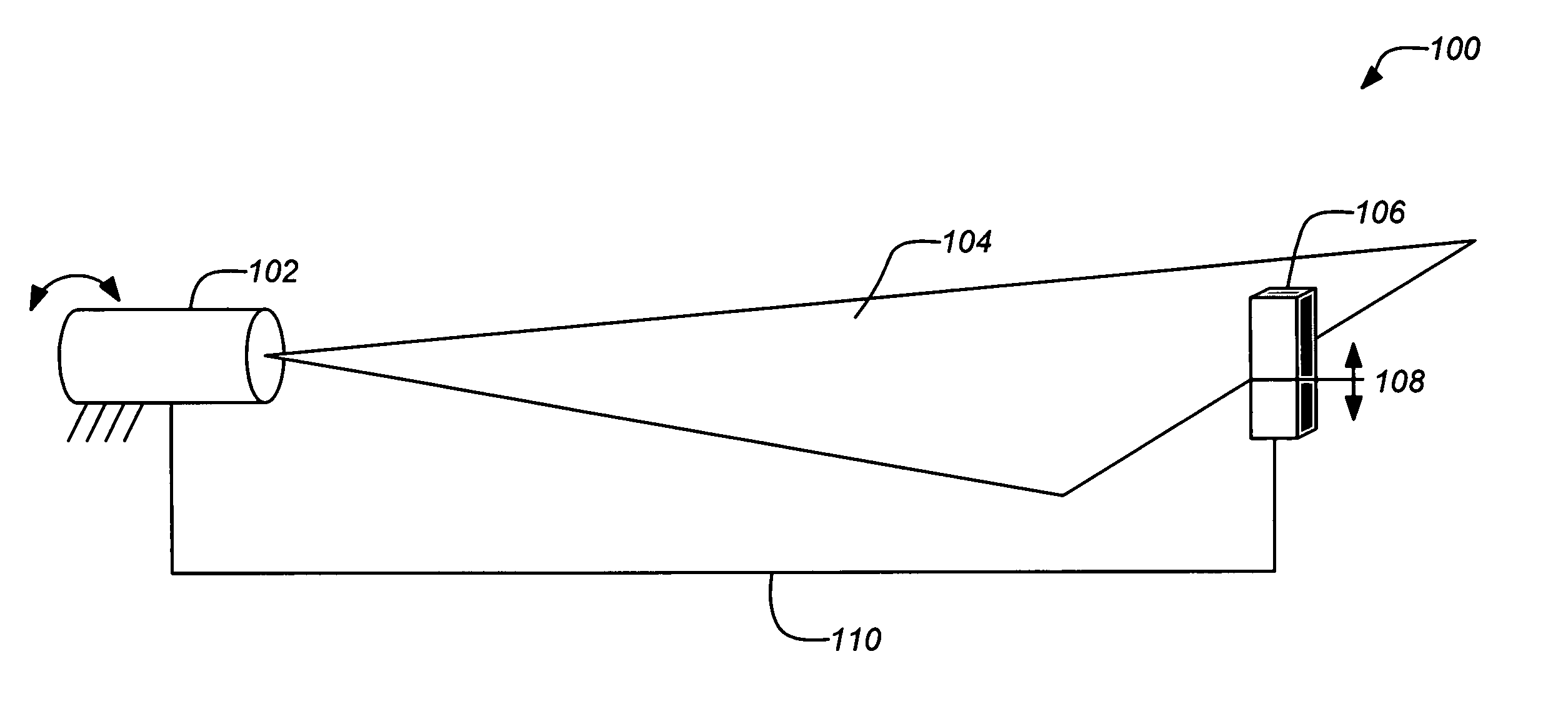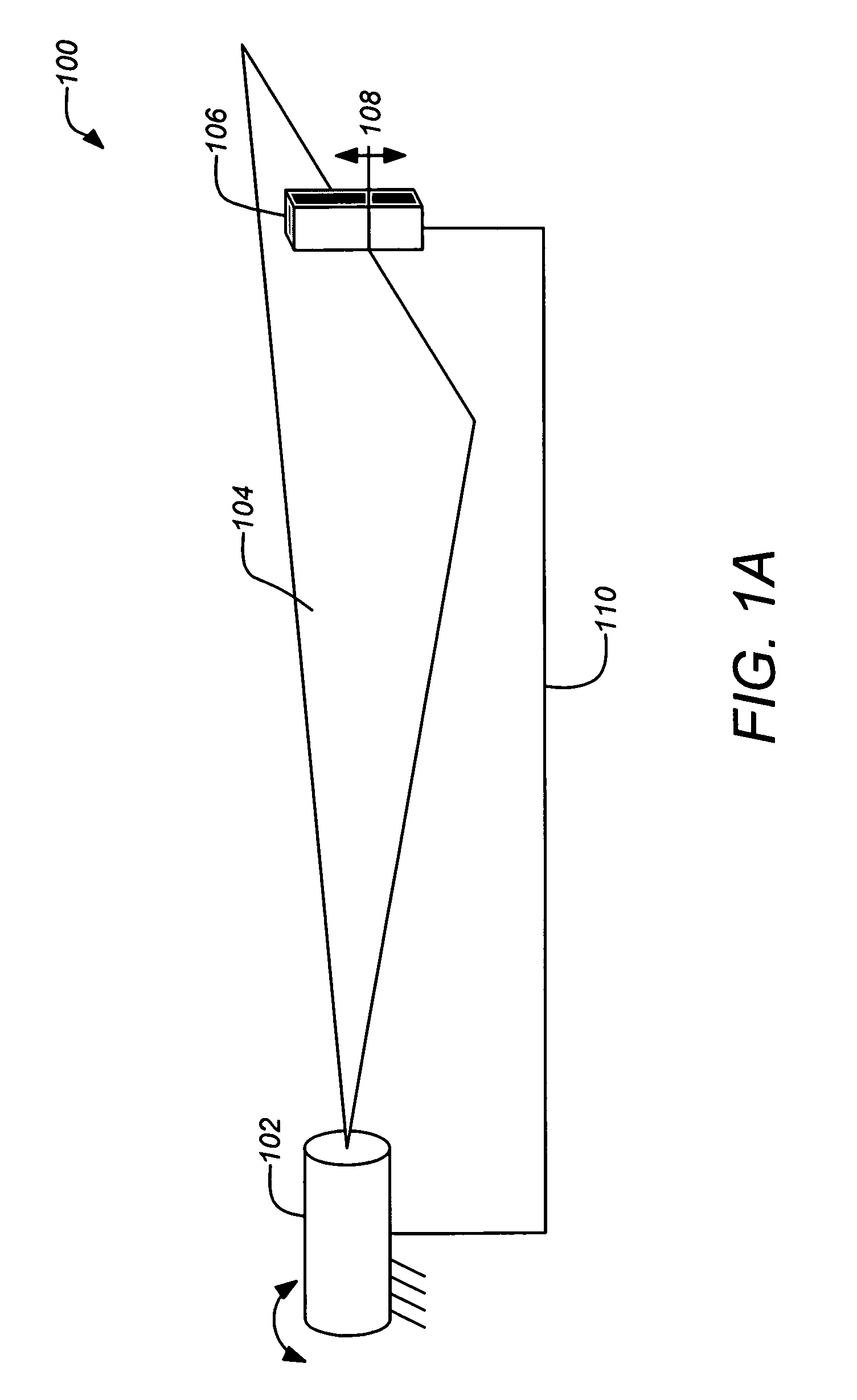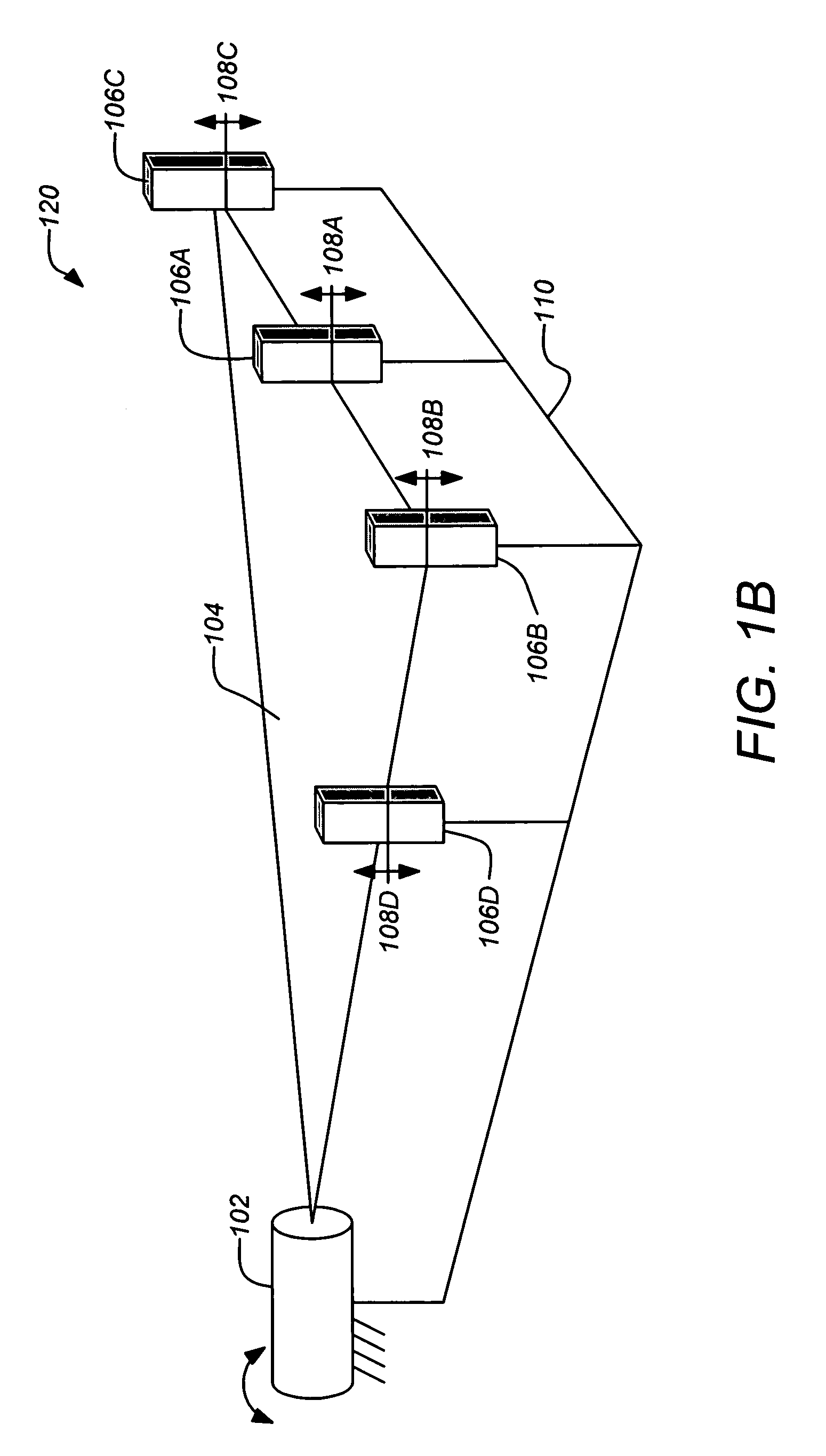Precision spacecraft payload platforms
- Summary
- Abstract
- Description
- Claims
- Application Information
AI Technical Summary
Benefits of technology
Problems solved by technology
Method used
Image
Examples
Embodiment Construction
[0029] 1. Overview
[0030] Embodiments of this invention meet the objective of providing a precision pointing measurement system and method for spacecraft payload platforms. Spacecraft optical payloads requiring precision pointing can utilize the invention. In addition, many deployable communication payloads can also obtain accurate pointing to meet required link margins employing embodiments of the invention. Such precision measurement is of critical importance to point the payload of a space based platform very accurately.
[0031] Further, embodiments of the present invention have advantages over other laser based metrology systems for pointing payloads on spacecraft in terms of simplicity, low cost, light weight and easy integration.
[0032]FIG. 1A is a schematic illustration of a foundational measurement unit 100 for a typical embodiment of the invention. It includes a laser beam transmitter 102 which transmits a fanned laser beam 104 at a fixed orientation (relative to a structure...
PUM
 Login to View More
Login to View More Abstract
Description
Claims
Application Information
 Login to View More
Login to View More - R&D
- Intellectual Property
- Life Sciences
- Materials
- Tech Scout
- Unparalleled Data Quality
- Higher Quality Content
- 60% Fewer Hallucinations
Browse by: Latest US Patents, China's latest patents, Technical Efficacy Thesaurus, Application Domain, Technology Topic, Popular Technical Reports.
© 2025 PatSnap. All rights reserved.Legal|Privacy policy|Modern Slavery Act Transparency Statement|Sitemap|About US| Contact US: help@patsnap.com



